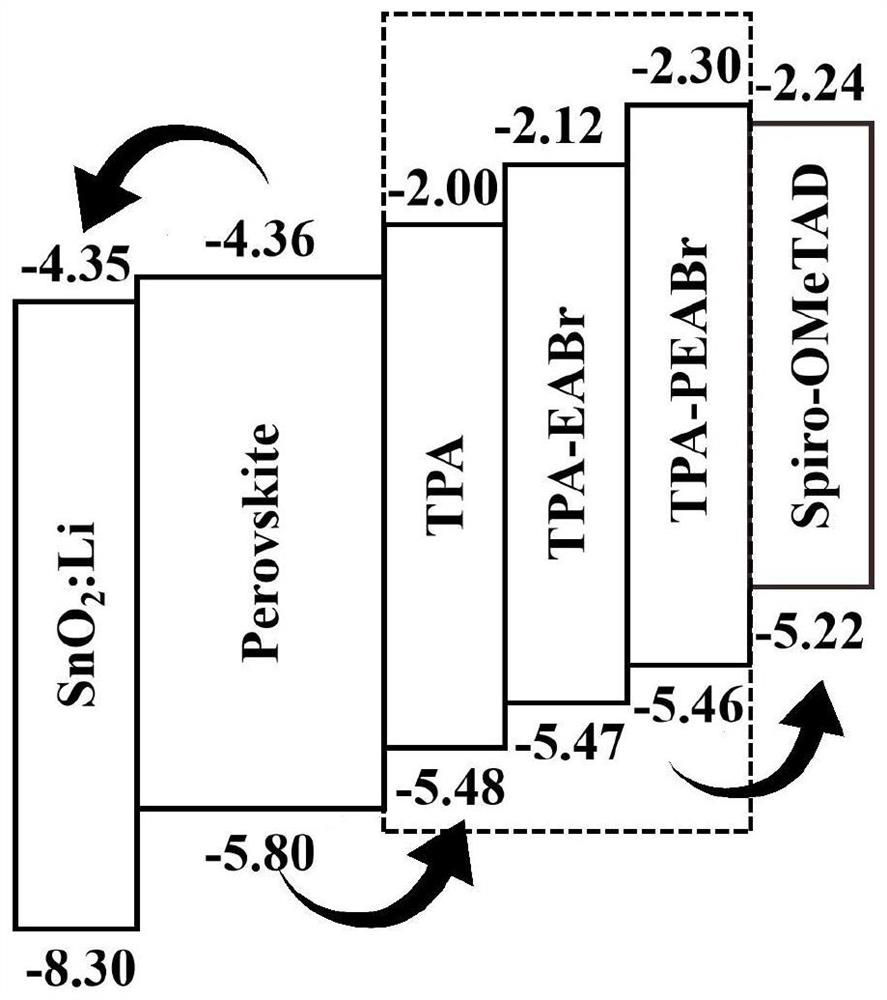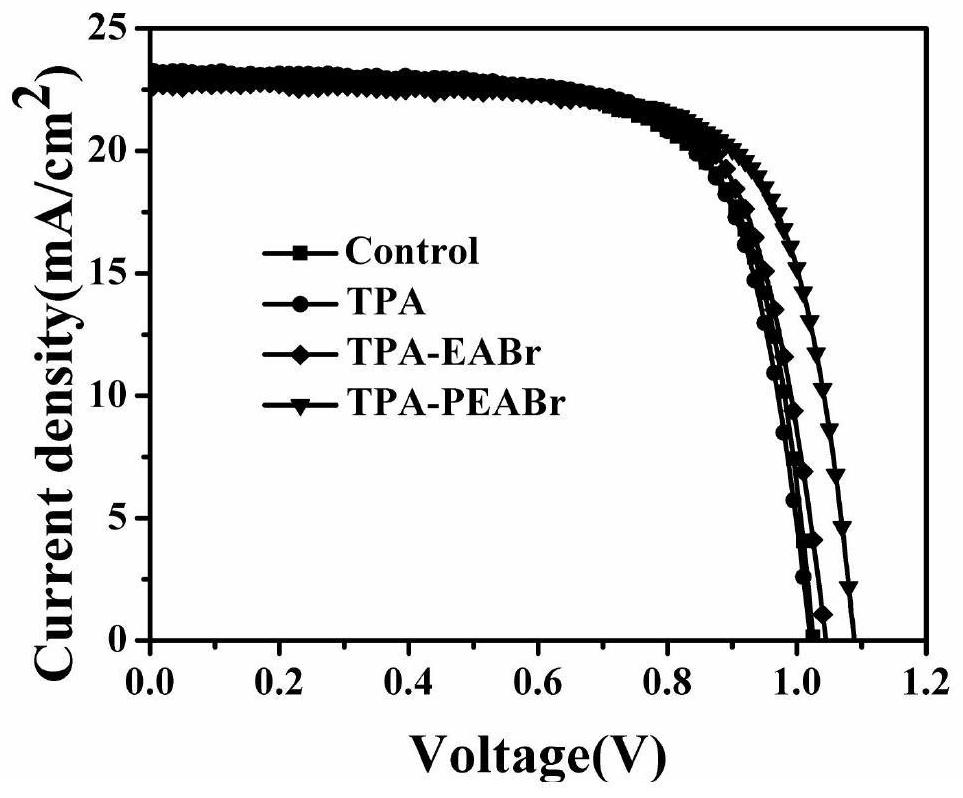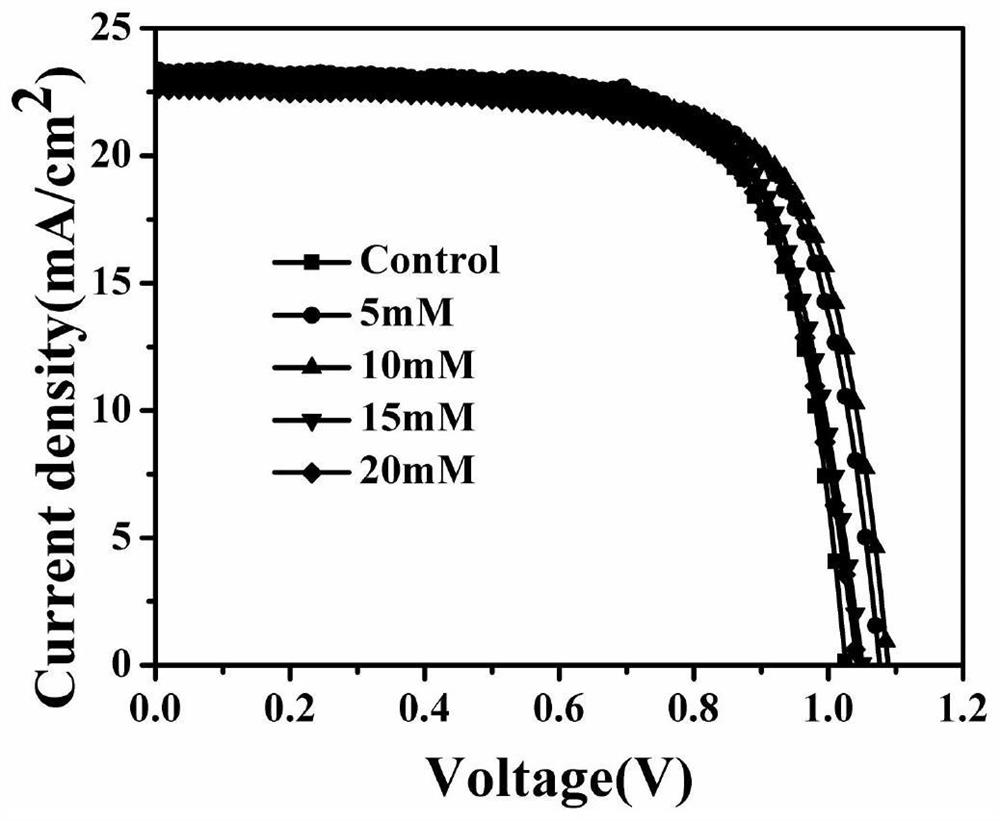Method for passivating perovskite thin film on surface by using multifunctional triphenylamine molecule
A triphenylamine and perovskite technology, applied in photovoltaic power generation, electrical components, electric solid devices, etc., can solve problems such as affecting the stability of PSCs PCE, affecting carrier transport, and reducing crystal quality.
- Summary
- Abstract
- Description
- Claims
- Application Information
AI Technical Summary
Problems solved by technology
Method used
Image
Examples
Embodiment 1
[0023] 1. Preparation of Electron Transport Layer
[0024] Take 2 mL of deionized water and add 450 μL of SnO 2 solution (15% colloidal dispersion, water) and LiCl aqueous solution (4.25mg / mL) were stirred evenly, and it was spin-coated on a clean ITO glass surface. Sintered for 30 minutes to obtain SnO 2 electron transport layer.
[0025] 2. Preparation of perovskite layer
[0026] (1) Preparation of precursor solution: PbI 2 (559.6mg) was dissolved in 1mL DMF, heated and stirred at 70°C for 12 hours; FAI (60mg), MABr (6mg), MACl (6mg) were dissolved in 1mL isopropanol, stirred at room temperature for 1 hour;
[0027] (2) Put the hot PbI 2 spin-coated on SnO 2 On the surface of the electron transport layer, the rotation speed is 1500rpm / s, and the time is 30s. After the spin coating is completed, it is annealed on a hot stage at 70°C for 1 minute;
[0028] (3) When the temperature drops to room temperature, the FAI:MABr:MACl isopropanol solution is spin-coated on the P...
Embodiment 2
[0037] The modification steps of the second embodiment are basically the same as those of the first embodiment, except that the modification material is a TPA isopropanol solution with a concentration of 10 mM.
Embodiment 3
[0039] The modification steps of the third embodiment are basically the same as those of the first embodiment, except that the modification material is TPA-EABr isopropanol solution with a concentration of 10 mM.
PUM
 Login to View More
Login to View More Abstract
Description
Claims
Application Information
 Login to View More
Login to View More - R&D
- Intellectual Property
- Life Sciences
- Materials
- Tech Scout
- Unparalleled Data Quality
- Higher Quality Content
- 60% Fewer Hallucinations
Browse by: Latest US Patents, China's latest patents, Technical Efficacy Thesaurus, Application Domain, Technology Topic, Popular Technical Reports.
© 2025 PatSnap. All rights reserved.Legal|Privacy policy|Modern Slavery Act Transparency Statement|Sitemap|About US| Contact US: help@patsnap.com



